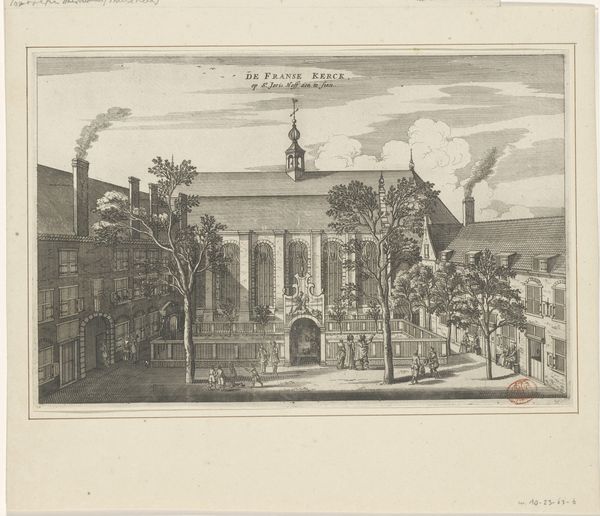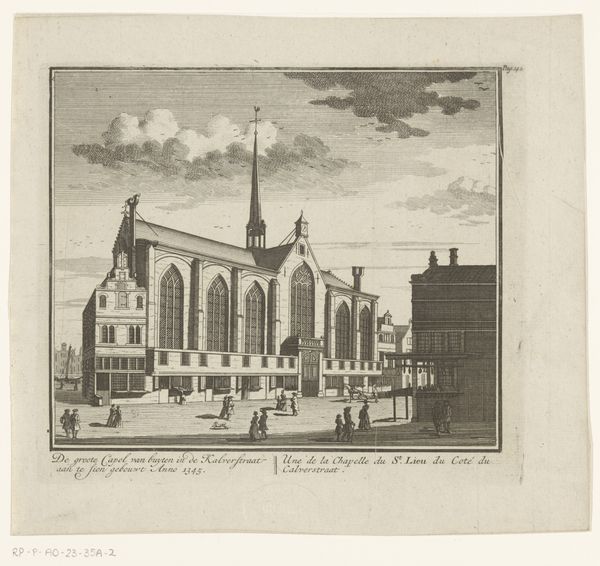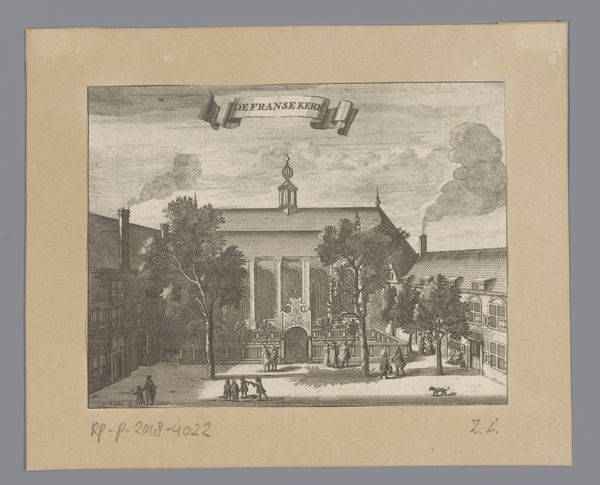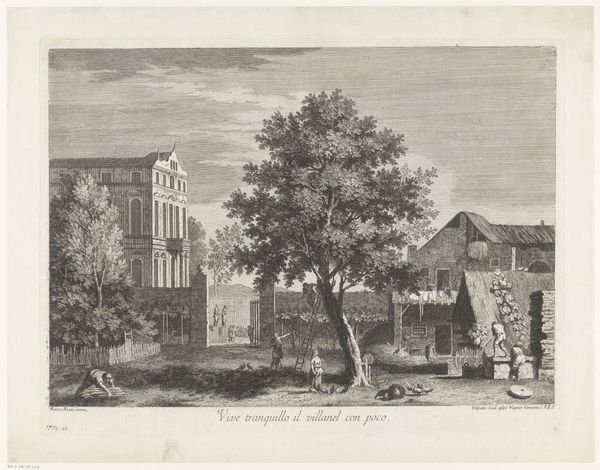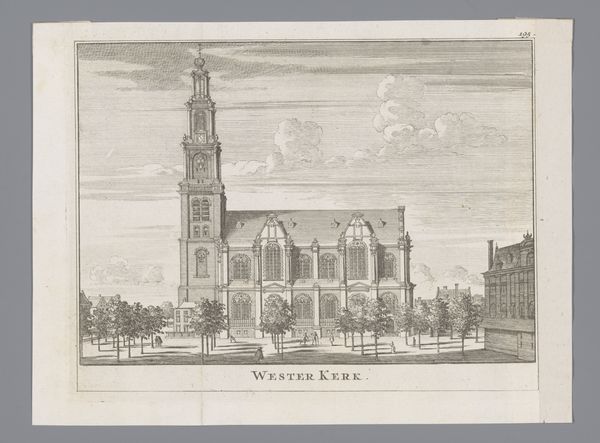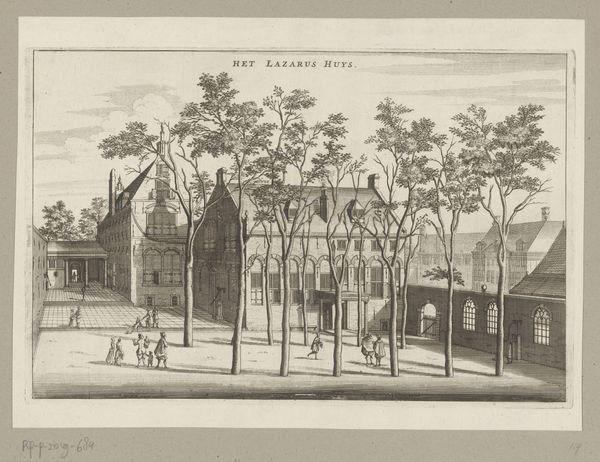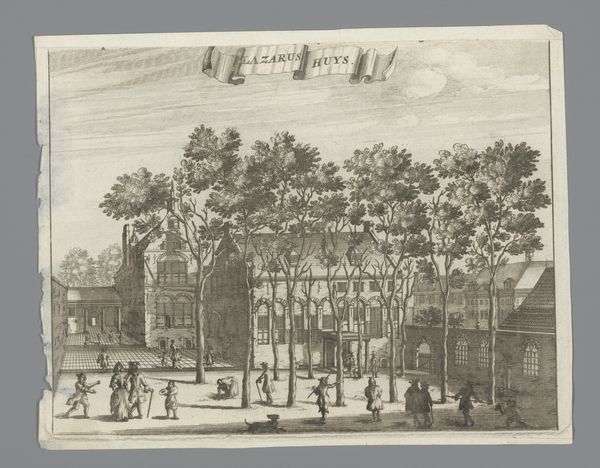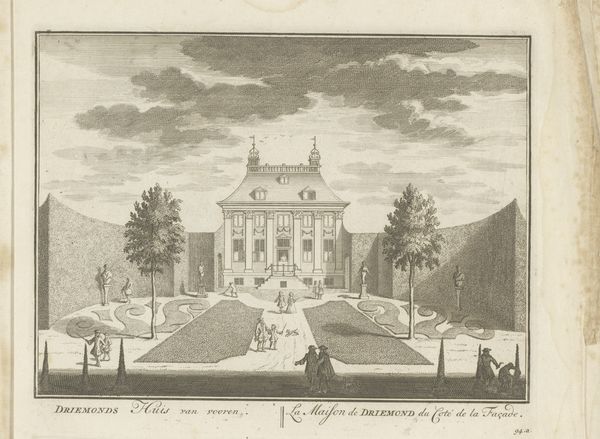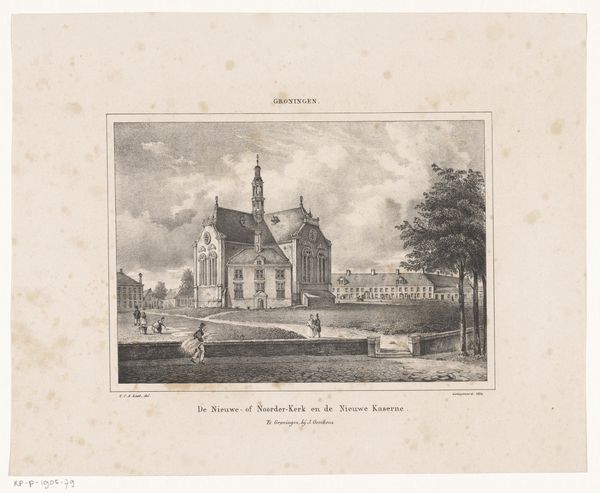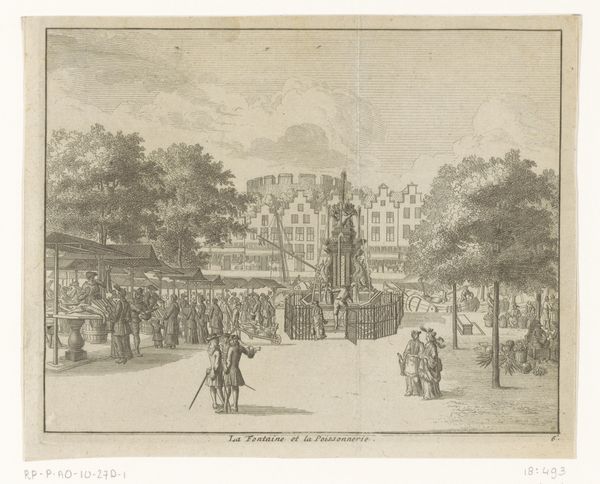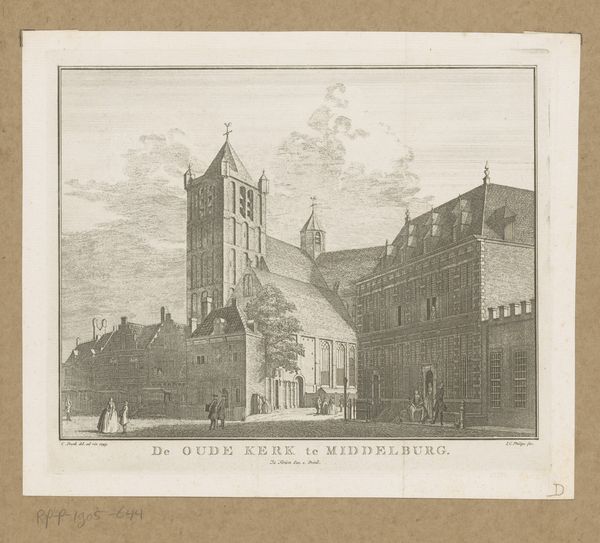
Gezicht op de Waalse Kerk en het Sint-Jorishof te Amsterdam c. 1695 - 1700
0:00
0:00
anonymous
Rijksmuseum
tempera, print, etching, engraving
#
baroque
#
tempera
#
dutch-golden-age
# print
#
etching
#
landscape
#
perspective
#
form
#
line
#
cityscape
#
academic-art
#
engraving
Dimensions: height 171 mm, width 205 mm
Copyright: Rijks Museum: Open Domain
Editor: This etching, titled *View of the Walloon Church and the Sint-Jorishof in Amsterdam*, dates back to around 1695-1700 and is attributed to an anonymous artist. It’s incredibly detailed, almost photographic in its precision. The figures milling around seem so unaware of being observed. What do you see when you look at this image? Curator: I see the rise of a new kind of public sphere being documented. Prints like this were part of a burgeoning market for images of cities, consumed by a growing middle class. The level of detail isn't just about precision; it's about creating a sense of shared experience and civic pride. Who do you think was meant to consume such imagery, and where? Editor: I suppose people who couldn't travel, or perhaps burghers wanting to see their city celebrated. Maybe it was displayed in their homes? Did prints like this shape Amsterdam's identity? Curator: Precisely! Prints like these actively shaped Amsterdam's identity both for its inhabitants and for those abroad. Consider how the Walloon Church, a space for French-speaking Protestants, is prominently featured. It reflects Amsterdam’s relative tolerance, something the city advertised widely. Note how people are depicted within the landscape. What does that indicate? Editor: I notice how the figures seem somewhat homogenous, possibly representative of the middle-class, walking or engaged in conversation, almost uniformly dressed… Curator: Exactly! This idealised vision projected a certain kind of order and prosperity, crucial for maintaining social stability and attracting investment. The print isn't just a depiction; it's a carefully constructed narrative, shaping perceptions of the city’s role. Editor: So, it’s more than just a pretty picture; it's propaganda in a way? It tells a very specific story about Amsterdam and its values? Curator: Indeed. It served as a visual articulation of the city's social and political aspirations at the time. It really underscores how even seemingly neutral depictions can be deeply enmeshed in the politics of representation. Editor: That's fascinating; I’ll definitely look at these historical cityscapes with a more critical eye now!
Comments
No comments
Be the first to comment and join the conversation on the ultimate creative platform.
